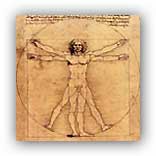|
Tall, thin women could face a greater risk of
infection with nontuberculous mycobacteria (NTM),
cousins of the organism that causes tuberculosis.
According to researchers at National Jewish Health,
women with NTM infections also showed a weakened
immune response associated with their fat cells, in
a paper published in the current issue of The
American Journal of Respiratory and Critical Care.

“Nontuberculous mycobacteria are widespread in the
environment, yet only some people develop infections,”
said Edward Chan, MD, senior author and professor of
medicine at National Jewish Health. “These findings
help us identify who is at greater risk for the
disease, and may point to more effective therapies
down the road.”
There are dozens of NTM species. Although the
organisms can infect skin and other body parts, they
most commonly infect the lungs. Lung infections are
very difficult to treat, often requiring surgery and
years of therapy with powerful intravenous
antibiotics. NTM infections can be fatal. Evidence
suggests that infections have been rising in recent
decades.
NTM species are widespread in water and soil, yet
only about five to six people per 100,000 develop
NTM infections each year; the incidence is higher in
individuals older than 50. An estimated 30,000 to
120,000 people in the US currently have NTM
infections. Researchers at National Jewish Health,
which sees more NTM infections than any other
medical center in the world, tried to figure out why
only some exposed patients develop these difficult
infections.
Elderly women represent the vast majority of NTM
patients, accounting for 85 percent of the patients
seen at National Jewish Health during the study, and
averaging about 64 years of age. The researchers
chose to compare the NTM patients with control
subjects at an osteoporosis clinic because these
individuals were similar age, race, and gender as
the NTM patients.
When compared to the women visiting the osteoporosis
clinic, the NTM patients were on average almost two
inches taller, had body mass indices almost two
points lower and 5.7 pounds less fat on their bodies.
The NTM patients also more frequently had concave
chests, a condition known as pectus excavatum, and
scoliosis, or curvature of the spine.
“Tall, thin women definitely appear to be more
susceptible to NTM infections,” said Dr. Chan. “They
share some characteristics of people with Marfan
syndrome. Since Marfan syndrome is caused by a
mutation in the fibrillin-1 gene, we plan to look at
that gene as a potential source of NTM
susceptibility.”
In addition to body type, NTM patients also differed
in their immune response. Fat cells produce hormones,
leptin and adiponectin, known to regulate both
weight and immune function. Leptin production
generally increases as people grow fatter. It also
helps stimulate the immune system to fight
infections.
Adiponectin, an immunosuppressive hormone, generally
decreases as people grow fatter.
While these standard relationships held for the
control subjects, they broke down for NTM patients
with levels of these fat-derived hormones varying
only minimally with body fat in NTM patients.
“In addition to body type, NTM patients also
appeared to have some dysregulation of their immune
response, which could increase their susceptibility
to NTM infections,” said co-author Michael Iseman,
MD, professor of medicine at National Jewish Health.
National Jewish Health is known worldwide for
treatment of patients with respiratory, cardiac,
immune and related disorders, and for groundbreaking
medical research. Founded in 1899 as a nonprofit
hospital, National Jewish Health remains the only
facility in the world dedicated exclusively to these
disorders. U.S. News & World Report has ranked
National Jewish the #1 respiratory hospital in the
nation for 15 consecutive years.
For more information
http://www.nationaljewish.org/
Patients with Nontuberculous Mycobacterial Lung
Disease Exhibit Unique Body and Immune Phenotypes
(MDN)
|
![]()